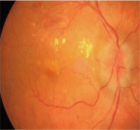Abstract
Research Article
The relationship of cell phone use and aggression among young adults with moderating roles of gender and marital status
Asma Naseer and Waqar Husain*
Published: 26 August, 2020 | Volume 4 - Issue 1 | Pages: 055-058
The use of cell phones has remarkably increased in the last two decades with several pros and cons. The negative consequences of cell phones on mental health have not been studied widely. Aggression, in this regard was a completely neglected area. The present study, therefore, was carried out to investigate the relationship between cell phone use and aggression and to further identify the moderating roles of gender and marital status between cell phone use and aggression. The inquiry included 500 young adults from Rawalpindi, Pakistan. Buss and Perry Aggression Questionnaire was administered. It was hypothesized that there would be a strong positive relationship between cell phone use and aggression. It was further hypothesized that gender and marital status would be significant moderators between cell phone use and aggression. The results supported the hypotheses on significant differences and made a significant contribution in the existing scientific literature.
Read Full Article HTML DOI: 10.29328/journal.ida.1001020 Cite this Article Read Full Article PDF
Keywords:
Aggression; IT consumption; Cellphone use
References
- Pakistan Telecommunication Authority. 129.6 Million subscribers in Pakistan. 2014. http://propakistani.pk/2013/11/18/mobile-phone-users-in-pakistan-reach-129-6-million/
- Johansson A, Nordin S, Heiden M, Sandström M. Symptoms, personality traits, and stress in people with mobile phone-related symptoms and electromagnetic hypersensitivity. J Psychosom Res. 2010; 68: 37-45. PubMed: https://pubmed.ncbi.nlm.nih.gov/20004299/
- Takao M, Takahashi S, Kitamura M. Addictive personality and problematic mobile phone use. Cyberpsychol Behav. 2009; 12: 501-507. PubMed: https://pubmed.ncbi.nlm.nih.gov/19817562/
- Ezoe S, Toda M, Yoshimura K, Naritomi A, Den R, Morimoto K. Relationships of personality and lifestyle with mobile phone dependence among female nursing students. Social Behav Personal Int J. 2009; 37: 231-238.
- Sansone RA, Sansone LA. Cell phones: the psychosocial risks. Innov Clin Neurosci. 2013; 10: 33-37. PubMed: https://pubmed.ncbi.nlm.nih.gov/23439568/
- Cohen S. Aftereffects of stress on human performance and social behavior: a review of research and theory. Psychological Bulletin.1980; 88: 82-108. PubMed: https://pubmed.ncbi.nlm.nih.gov/7403392/
- Underwood M, Galen B, Paquette J. Top ten challenges for understanding gender and aggression in children: Why can't we all just get along? Social Development. 2001; 10: 248-266.
- Basow SA, Cahill KF, Phelan JE, Longshore K, McGillicuddy-DeLisi A. Perceptions of relational and physical aggression among college students: Effects of gender of perpetrator, target, and perceiver. Psychology of Women Quarterly. 2017; 31: 85-95.
- Conway AM. Girls, aggression, and emotion regulation. Am J Orthopsychiatry. 2005; 75: 334-336.
- Crick NR, Grotpeter JK. Relational aggression, gender, and social‐psychological adjustment. Child Dev. 1995; 66: 710-722. PubMed: https://pubmed.ncbi.nlm.nih.gov/7789197/
- Forrest S, Eatough V, Shevlin M. Measuring adult indirect aggression: The development and psychometric assessment of the indirect aggression scales. Aggressive Behav. 2005; 31: 84-97.
- Gomes MM. A concept analysis of relational aggression. J Psychiatric Mental Health Nurs. 2007; 14: 510-515.
- Marini ZA, Dane AV, Bosacki SL, Cura YLC. Direct and indirect bully‐victims: differential psychosocial risk factors associated with adolescents involved in bullying and victimization. Aggressive Behav. 2006; 32: 551-569.
- Coyne SM, Archer J, Eslea M. We're not friends anymore! Unless…”: The frequency and harmfulness of indirect, relational, and social aggression. Aggressive Behav. 2006; 32: 294-307.
- Loudin L, Alexandra L, Sheri R. Relational aggression in college students: Examining the roles of social anxiety and empathy. Aggressive Behav. 2003; 29: 430-439.
- Archer J, Coyne S. An integrated review of indirect, relational, and social aggression. Pers Soc Psychol Rev. 2005; 9: 212-230. PubMed: https://pubmed.ncbi.nlm.nih.gov/16083361/
- Owens L, ShuteR, Slee P. Guess what I just heard!: Indirect aggression among teenage girls in Australia. Aggressive Behav. 2000; 26: 67-83.
- Storch EA, Bagner DM, Geffken GR, Baumeister AL. Association between overt and relational aggression and psychosocial adjustment in undergraduate college students. Violence Vict. 2004; 19: 689-700. PubMed: https://pubmed.ncbi.nlm.nih.gov/16004070/
- Cairns RB, Cairns BD, Neckerman HJ, Ferguson LL, Gariepy JL. Growth and aggression: I. Childhood to early adolescence. Develop Psychol. 1989; 25: 320-324.
- Green LR, Richardson DR, Lago T. How do friendship, indirect, and direct aggression relate? Aggressive Behavior. 1996; 22: 81-86.
- Bowie BH. Relational aggression, gender, and the developmental process. Journal of Child and Adolescent Psychiatric Nursing. 2007; 20: 107-115.
- Young EL, Boye AE, Nelson DA. Relational aggression: Understanding, identifying, and responding in schools. Psychology in the Schools. 2006; 43: 297-312.
- Merrell K W, Buchanan R, Tran OK. Relational aggression in children and adolescents: A review with implications for school settings. Psychology in the Schools. 2006; 43: 345-360.
- Husain W. Prevalent Tendencies for Mental Disorders in Pakistan. Clínica y Salud. 2018; 29: 34-38.
- Husain W. Barriers in Seeking Psychological Help: Public Perception in Pakistan. Community Ment Health J. 2019; 56: 75-78. PubMed: https://pubmed.ncbi.nlm.nih.gov/31542848/
- Husain W, Faize FA. Public awareness of psychological problems in Pakistan. Ment Health Rev J. 2020; 25: 35-45.
- Buss A, Perry M. The aggression questionnaire. J Pers Soc Psychol. 1992; 63: 452-459. PubMed: https://pubmed.ncbi.nlm.nih.gov/1403624/
- Thomée S, Dellve L, Härenstam A, Hagberg M. Perceived connections between information and communication technology use and mental symptoms among young adults-a qualitative study. BMC Public Health. 201; 10: 66-68. PubMed: https://pubmed.ncbi.nlm.nih.gov/20152023/
- Dixit S. A study to evaluate mobile phone dependence among students of a medical college and associated hospital of central India. Indian J Community Med. 2010; 2: 339-341. PubMed: https://www.ncbi.nlm.nih.gov/pmc/articles/PMC2940198/
- Hunt J, Eisenberg D. Mental health problems and help-seeking behavior among college students. J Adolesc Health. 2010; 46: 3-10. PubMed: https://pubmed.ncbi.nlm.nih.gov/20123251/
- Lonn S, Ahlbom A, Hall P, Feychting M. Mobile phone use and the risk of acoustic neuroma. Epidemiology. 2004; 15: 653-659. PubMed: https://www.ncbi.nlm.nih.gov/pmc/articles/PMC2361634/
- Schoemaker MJ, Swerdlow AJ, Ahlbom A, Auvinen A, Blaasaas KG, et al. Mobile phone use and risk of acoustic neuroma: results of the Interphone case-control study in five North European countries. Br J Cancer. 2005; 93: 842-848. PubMed: https://www.ncbi.nlm.nih.gov/pmc/articles/PMC2361634/
- Maccoby EE, Jacklin CN. The psychology of sex differences. Stanford: Stanford University Press. 1974.
- Coie JD, Dodge KA. Aggression and antisocial behavior. In W. Damon & N. Eisenberg (Eds). Handbook of Child Psychology, Vol. 3: Social, emotional and personality development. Stanford: Stanford University Press. 1997.
- Bjorkqvist K, Kirsti M, Lagerspetz, Karin O. Sex Differences in Covert Aggression. Aggressive Behav. 1994; 202: 27-33.
Similar Articles
-
Anti-anxiety effects in mice following acute administration of Ficus Thonningii (wild fig)Aduema W*,Akunneh-Wariso C,Ejiofo DC,Amah AK. Anti-anxiety effects in mice following acute administration of Ficus Thonningii (wild fig). . 2018 doi: 10.29328/journal.ida.1001009; 2: 040-047
-
The relationship of cell phone use and aggression among young adults with moderating roles of gender and marital statusAsma Naseer,Waqar Husain*. The relationship of cell phone use and aggression among young adults with moderating roles of gender and marital status. . 2020 doi: 10.29328/journal.ida.1001020; 4: 055-058
Recently Viewed
-
Experience with trans radial uterine artery embolisation for uterine fibroids in a tertiary center in Saudi ArabiaGehan Farid*,Reem Kamal,Mohammed Thani Al-Shammari,Mohamed Swaraldahab,Hassan Swaraldahab. Experience with trans radial uterine artery embolisation for uterine fibroids in a tertiary center in Saudi Arabia. Clin J Obstet Gynecol. 2020: doi: 10.29328/journal.cjog.1001072; 3: 167-174
-
Drug Rehabilitation Centre-based Survey on Drug Dependence in District Shimla Himachal PradeshKanishka Saini,Palak Sharma,Bhawna Sharma*,Atul Kumar Dubey,Muskan Bhatnoo,Prajkta Thakur,Vanshika Chandel,Ritika Sinha. Drug Rehabilitation Centre-based Survey on Drug Dependence in District Shimla Himachal Pradesh. J Addict Ther Res. 2025: doi: 10.29328/journal.jatr.1001032; 9: 001-006
-
Overview on current approach on recurrent miscarriage and threatened miscarriageBasant Sharma*,Jagat Deep,Chandrika Pandit,Bina Basnyat,Bandana Khanal,BB Raut,Brij Mohan Rajak,Deepak Patel,Rangina Laikangbam,Rajendra Basyal. Overview on current approach on recurrent miscarriage and threatened miscarriage. Clin J Obstet Gynecol. 2020: doi: 10.29328/journal.cjog.1001070; 3: 151-157
-
4-year recurrence risk factors after tension-free vaginal tape-obturator as a treatment of stress urinary incontinenceDe Miguel Manso S*,García García E,Gobernado Tejedor JA,Badillo Bercebal CE,Viruega Cuaresma D,González Martín JI. 4-year recurrence risk factors after tension-free vaginal tape-obturator as a treatment of stress urinary incontinence. Clin J Obstet Gynecol. 2020: doi: 10.29328/journal.cjog.1001069; 3: 145-150
-
A Comparative Study of Metoprolol and Amlodipine on Mortality, Disability and Complication in Acute StrokeJayantee Kalita*,Dhiraj Kumar,Nagendra B Gutti,Sandeep K Gupta,Anadi Mishra,Vivek Singh. A Comparative Study of Metoprolol and Amlodipine on Mortality, Disability and Complication in Acute Stroke. J Neurosci Neurol Disord. 2025: doi: 10.29328/journal.jnnd.1001108; 9: 039-045
Most Viewed
-
Evaluation of Biostimulants Based on Recovered Protein Hydrolysates from Animal By-products as Plant Growth EnhancersH Pérez-Aguilar*, M Lacruz-Asaro, F Arán-Ais. Evaluation of Biostimulants Based on Recovered Protein Hydrolysates from Animal By-products as Plant Growth Enhancers. J Plant Sci Phytopathol. 2023 doi: 10.29328/journal.jpsp.1001104; 7: 042-047
-
Sinonasal Myxoma Extending into the Orbit in a 4-Year Old: A Case PresentationJulian A Purrinos*, Ramzi Younis. Sinonasal Myxoma Extending into the Orbit in a 4-Year Old: A Case Presentation. Arch Case Rep. 2024 doi: 10.29328/journal.acr.1001099; 8: 075-077
-
Feasibility study of magnetic sensing for detecting single-neuron action potentialsDenis Tonini,Kai Wu,Renata Saha,Jian-Ping Wang*. Feasibility study of magnetic sensing for detecting single-neuron action potentials. Ann Biomed Sci Eng. 2022 doi: 10.29328/journal.abse.1001018; 6: 019-029
-
Pediatric Dysgerminoma: Unveiling a Rare Ovarian TumorFaten Limaiem*, Khalil Saffar, Ahmed Halouani. Pediatric Dysgerminoma: Unveiling a Rare Ovarian Tumor. Arch Case Rep. 2024 doi: 10.29328/journal.acr.1001087; 8: 010-013
-
Physical activity can change the physiological and psychological circumstances during COVID-19 pandemic: A narrative reviewKhashayar Maroufi*. Physical activity can change the physiological and psychological circumstances during COVID-19 pandemic: A narrative review. J Sports Med Ther. 2021 doi: 10.29328/journal.jsmt.1001051; 6: 001-007

HSPI: We're glad you're here. Please click "create a new Query" if you are a new visitor to our website and need further information from us.
If you are already a member of our network and need to keep track of any developments regarding a question you have already submitted, click "take me to my Query."















































































































































